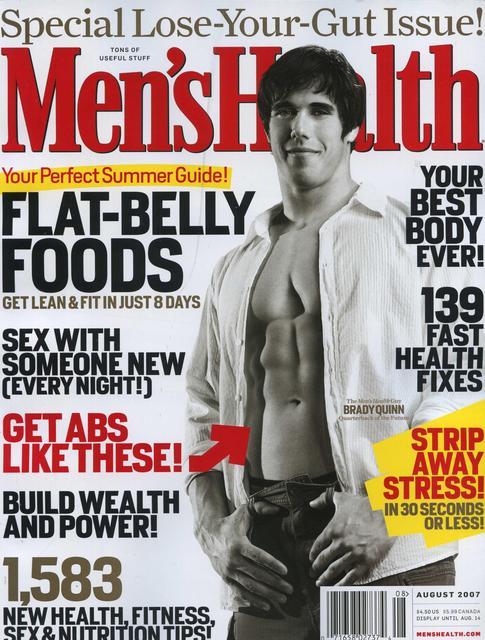Tyler Rankin's Final Project
Conclusion and Works Cited

Masculine discourse is no less oppressive or constraining than the often touted societal
ideals on a "woman's proper role." Men are instructed on how to behave emotionally, economically,
and sexually and are given extreme examples of the ideal masculine physique. The various visuals
and captions of the covers of "Men's Health" reveal that the ideas of ideal manhood and masculine
discourse are interrelated in the fields of power, sexuality, and economics, and that the common
current under reach of these masculine ideas is the ideal male body. This close look reveals that
in many subtle and pervasive ways, as well as obvious ones, the body is extremely influential to
ideas of selfhood, especially in regards to sex and gender roles for men and women alike.
Works Cited
Breazeale, Kenon. "In Spite of Women: Esquire Magazine aand the Construction of the Male Consumer."
Gender, Race, and Class in Media. 2nd ed. London: SAGE, 2003. 232-33.
Cameron, Deborah. "Performing Gender Identity: Young Men's Talk and the Construction of
Heterosexual Masculinity." Language and Masculinity. Cambridge: Blackwell, 1997. 52-54.
Collinson, David, and Jeff Hearn. "'Men' at 'Work': multiple masculinities/multiple workplaces."
Understanding Masculinities. Philadelphia: Open UP, 1996. 66-68.
Dotson, Edisol W. Behold the Man: the hype and selling of male beauty in media and culture.
New York: Haworth P, 1999.
Griffin, Emory A. First look at Communication Theory. 6th ed. Boston: McGraw-Hill, 2006.
Rose, Gillian. Visual Methodologies: An introduction to the interpretation of visual materials.
London: SAGE, 2007.
Tasker, Yvonne. Spectacular Bodies: Gender, genre and the action cinema. London: Routledge, 1993.
Go to front page
Back 
